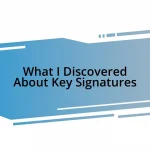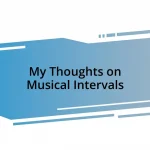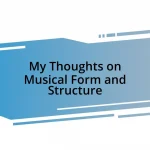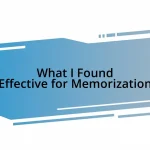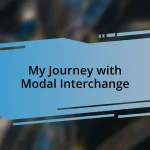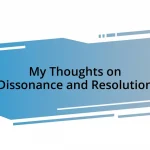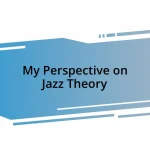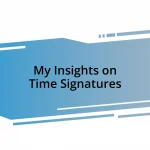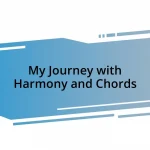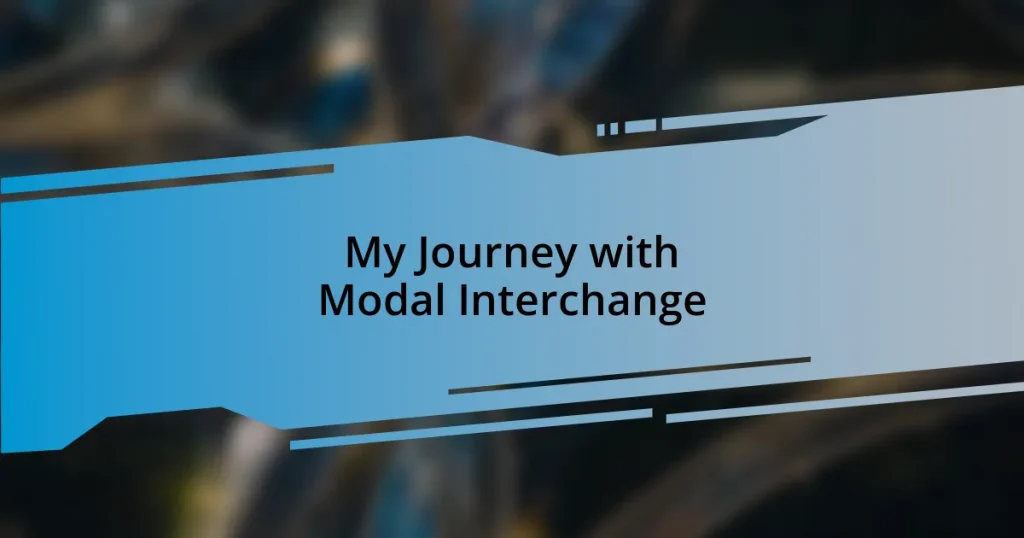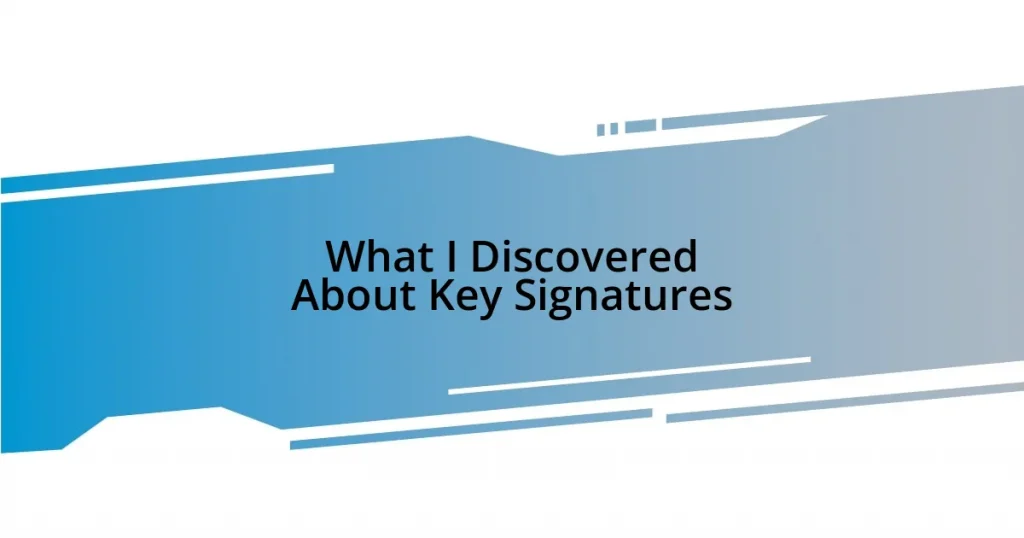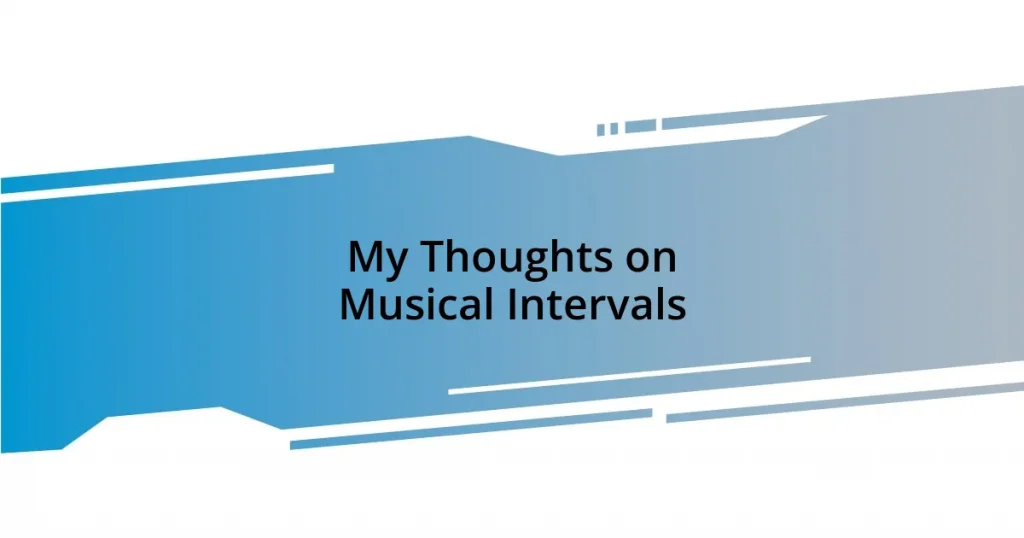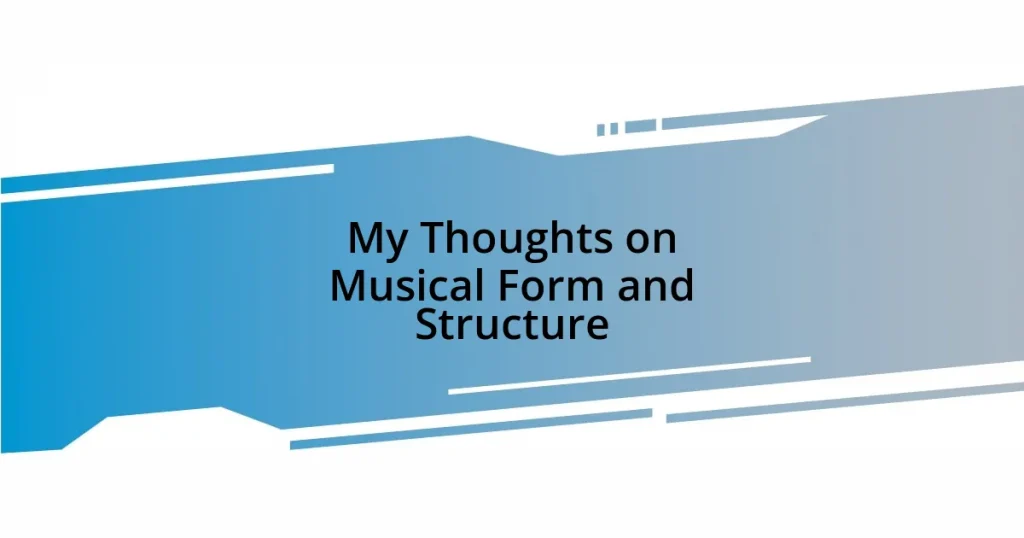Key takeaways:
- Modal interchange enhances emotional storytelling in music by borrowing chords from parallel modes, creating tension and resolution.
- Techniques such as parallel mode borrowing and dynamic range exploration empower composers to surprise listeners and deepen emotional impact.
- Common challenges include fear of dissonance, recognizing chord relationships, and ensuring audience comprehension of creative risks.
- Success stories highlight the transformative power of modal interchange, enriching compositions and fostering profound audience connections.
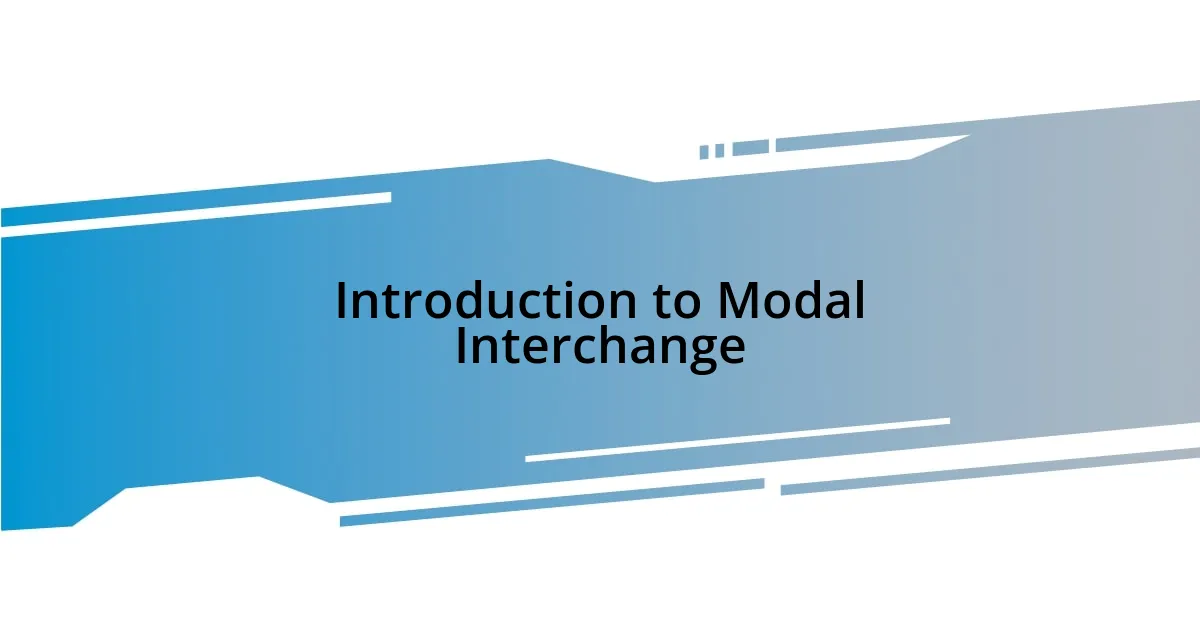
Introduction to Modal Interchange
Modal interchange is a fascinating concept in music that refers to the use of chords from one key or mode while still maintaining a tonal center in another. I remember the first time I stumbled upon this in a song; it felt like a light bulb switched on. I asked myself, “How do these unexpected chords create such an intriguing emotional shift?”
This technique invites us to explore the relationship between different modes, such as major and minor, and how blending them can evoke a range of feelings. Have you ever noticed how a sudden shift in music can make your heart race? That’s modal interchange at work, weaving magic through contrasting moods. When I first experimented with this in my compositions, it transformed not only my sound but also the depth of emotion I could convey.
In essence, modal interchange allows composers to play with listeners’ expectations, crafting moments that are both surprising and satisfying. It’s a delightful way to expand your harmonic palette, making music not just a series of notes but a vibrant storytelling experience. What makes creating those moments so rewarding is sharing that emotional journey with the audience—taking them on a ride through various shades of sound.
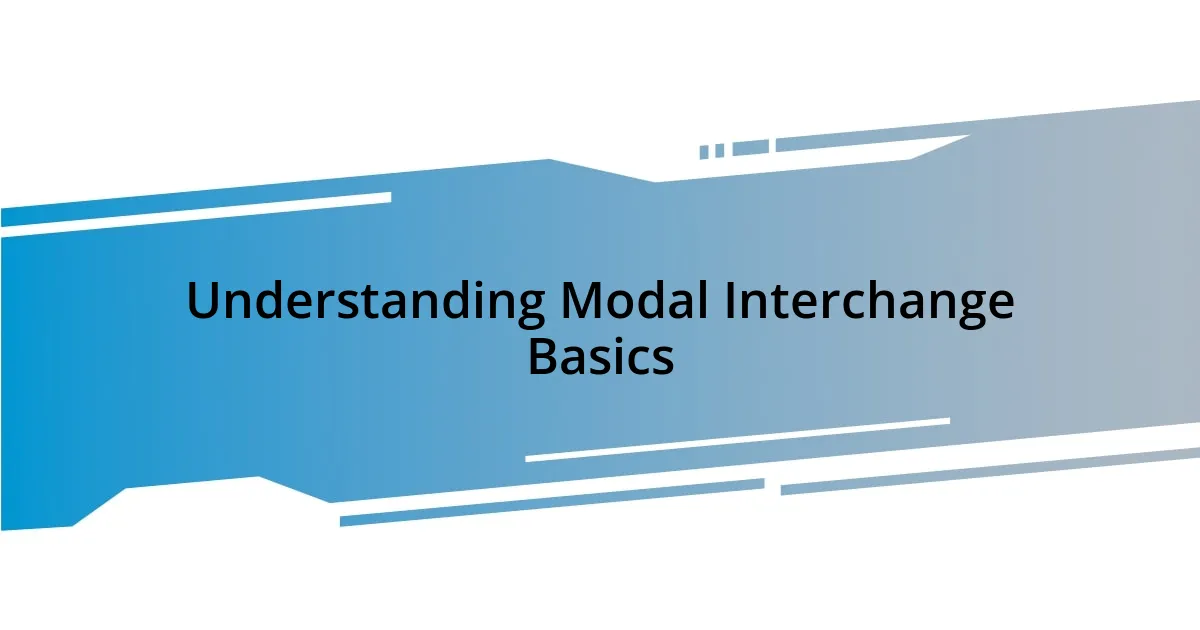
Understanding Modal Interchange Basics
Understanding modal interchange can unlock a treasure trove of harmonic possibilities for musicians. At its core, modal interchange involves borrowing chords from parallel modes—think of using a minor chord in a major progression. This can create moments of tension and release, adding complexity and depth. I recall one evening experimenting with a haunting Dorian mode while writing a more straightforward major song. The emotional shift was profound; it felt like stepping into a new world within the same piece.
What’s really riveting about modal interchange is its ability to surprise both the composer and listener. For instance, inserting a modal chord unexpectedly can evoke feelings that were entirely unanticipated. I once composed a piece that transitioned from a bright and cheerful major sound to a somber minor chord. The audience’s reaction—caught off guard yet captivated—was a testament to how effective this technique can be in storytelling through music.
This technique isn’t just for advanced musicians. Even beginners can benefit from understanding how to implement modal interchange into their work. By experimenting with borrowed chords, you can find your unique voice. It’s like a palette of colors for a painter; each choice can dramatically affect the overall mood. To sum up, modal interchange is a powerful tool that invites creativity, emotion, and exploration in the art of composition.
| Aspect | Details |
|---|---|
| Definition | Using chords from one mode while centered in another. |
| Example | Borrowing a minor chord in a major key context. |
| Emotional Impact | Creates tension and resolution, enhancing storytelling. |
| Accessibility | Can be utilized by musicians at any skill level. |
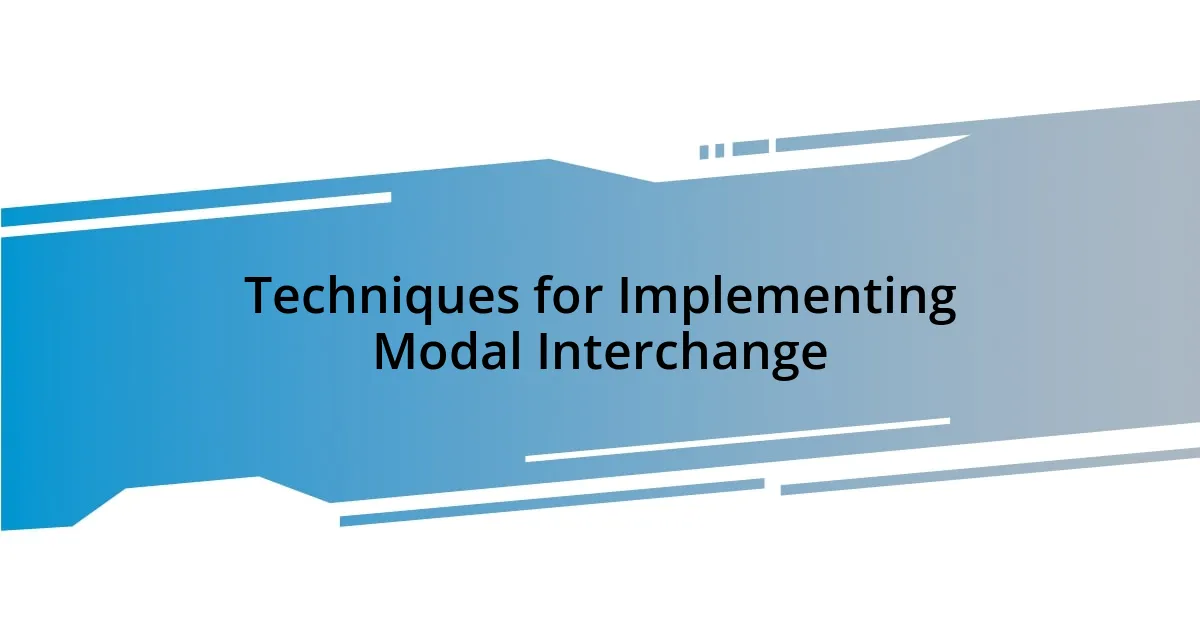
Techniques for Implementing Modal Interchange
Exploring techniques for implementing modal interchange has been one of the most exciting journeys in my musical development. One key approach is to start with a chord progression in a major key and then subtly introduce a chord from the parallel minor. I remember the first time I did this in one of my songs—lifting a major chord to borrow a minor chord caught me by surprise! It added unexpected emotional depth, much like a sudden rain shower on a sunny day—it’s refreshing yet catches you off guard.
Here are some techniques to try:
- Parallel Mode Borrowing: Work within a major key and incorporate chords from the minor scale to introduce tension.
- Cadential Changes: Use borrowed chords at cadences to create a shift in expected harmonic resolution.
- Modal Pivot: Transition smoothly between modes, allowing a seamless narrative flow in your compositions.
- Dynamic Range Exploration: Contrast chords can create a stark emotional reaction—a joyful progression suddenly interrupted by a somber borrowed chord.
By experimenting with these techniques, I found that my compositions began to resonate emotionally on a deeper level. Sometimes, it’s not just about music theory, but about daring to pull from your emotions and letting those unexpected chords guide your narrative.
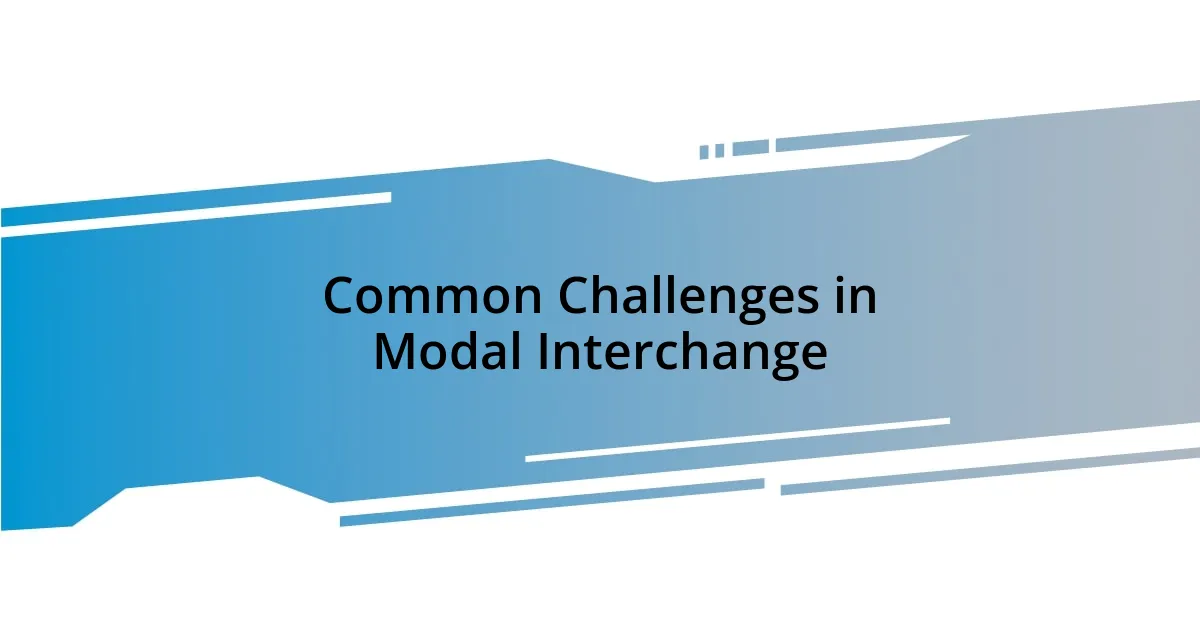
Common Challenges in Modal Interchange
When diving into modal interchange, I often face a common challenge: the fear of dissonance. As someone who thrives on emotional expression, I remember the anxiety I felt the first time I transitioned from a major chord to a borrowed modal chord. Would it sound jarring or would it flow? That uncertainty can be daunting, but I’ve learned that embracing discomfort can lead to the most rewarding breakthroughs in my compositions.
Another hurdle is understanding the subtlety of modal relationships. Initially, I struggled to recognize which chords I could borrow without losing my harmonic foundation. In one of my earlier experiments, I overdid it, layering too many borrowed chords. The piece became a chaotic mix rather than an emotional narrative. It taught me the value of moderation. Sometimes, one well-placed modal chord can evoke powerful emotions, while others may blur the intent of the piece.
Lastly, there’s the challenge of listener reception. I vividly recall performing a piece that incorporated unexpected modal shifts. While a few listeners were captivated, others looked puzzled. It made me ponder: how much creative risk should we take? The answer, I believe, lies in clarity and intention. When I let my audience in on the emotional journey, even the most surprising modal changes begin to resonate, creating a shared experience that transcends confusion.
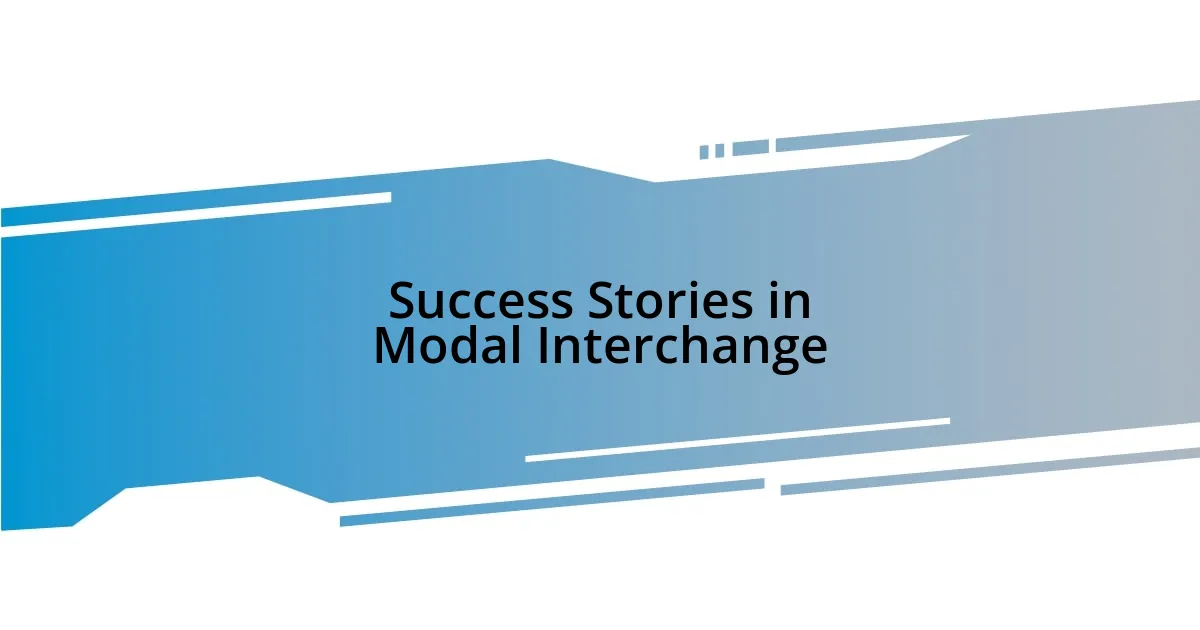
Success Stories in Modal Interchange
Discovering the power of modal interchange has led to some truly unforgettable moments in my musical journey. For instance, I recall a project where I decided to infuse a minor bluesy feel into a traditionally upbeat pop song. The resulting chorus felt like discovering a hidden treasure in familiar territory—suddenly, that infectious energy was layered with poignant melancholy. This added depth transformed not only the song but also my understanding of emotional storytelling through music.
One particularly thrilling success story was when I collaborated with a friend who primarily composed in a rigid structure. By encouraging them to incorporate modal interchange, we created a piece that whimsically shifted from major to modal minor. Seeing their eyes light up as they realized just how evocative these unexpected changes could be was a beautiful reminder of music’s unique ability to stir emotions and provoke thought.
Have you ever experienced a moment in which a song just clicked for you? That was me at a recent performance where I incorporated modal shifts in real time. The audience’s response was electric—they leaned in, absorbing each unexpected turn. It reinforced my belief that when we embrace modal interchange, we not only enrich our own works but also create shared experiences that deeply resonate with listeners. Don’t you find that the most profound connections often spring from the boldest choices?

